Samsung Unpacked 2021 Part 2: Galaxy Z Flip 3 & Z Fold 3 Announced
by Andrei Frumusanu on August 11, 2021 10:00 AM EST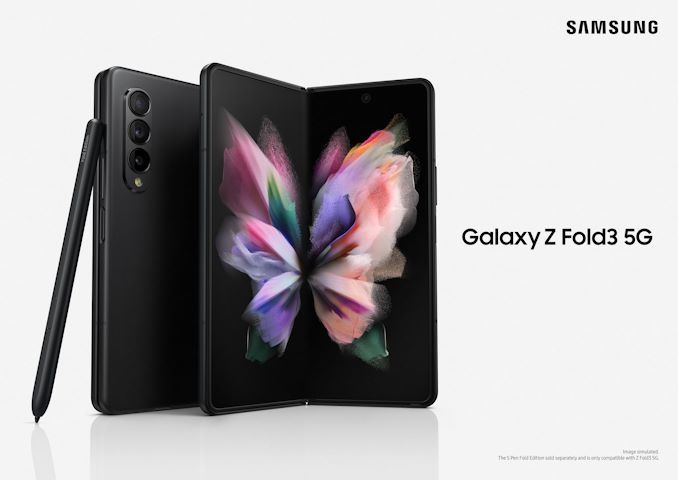
Today Samsung is holding its second Mobile Unpacked event for the year, announcing the new Galaxy Z Flip 3 and the new Galaxy Z Fold 3. It’s a bit of an unusual Unpacked event compared to past years as this time around and for this year we won’t be seeing a new Galaxy Note device.
The new Galaxy Z devices follow as iterations to their predecessors – the original Z Flip announced in February last year and Z Flip 5G later in August, and the Z Fold 2 which was also announced around the same time in 2020.
Both devices are obvious characterised by their folding form-factor designs, which Samsung this year has iterated on, included new hardware internals, and generally just polished their functionality compared to their predecessors. Samsung’s focus towards foldables seems to result as the market generally is finding it hard to differentiate oneself in-between competitors.
| Galaxy Z Phones 2021 | |||
| Galaxy Z Flip 3 | Galaxy Z Fold 3 | ||
| SoC | Qualcomm Snapdragon 888 1x Cortex-X1 @ 2.84GHz 3x Cortex-A78 @ 2.42GHz 4x Cortex-A55 @ 1.80GHz Adreno 660 @ 840MHz |
||
| DRAM | 8GB LPDDR5-6400 | 12GB LPDDR5-6400 | |
| Primary Display | 6.7" AMOLED 2640 x 1080 120Hz Refresh |
7.6" AMOLED Foldable 2208 x 1768 120Hz Refresh |
|
| Secondary Display | 1.9" 260 x 512 |
6.2" AMOLED 2260 x 832 120Hz Refresh |
|
| Size | Height | 166mm (unfolded) | 158.2mm |
| Width | 72.2mm | 67.1mm (folded) 128.1mm (unfolded) |
|
| Depth | 15.9 - 17.1mm (folded) 6.9mm (unfolded) |
14.4 - 16.0mm (folded) 6.4mm (unfolded) |
|
| Weight | 183g | 271g | |
| Battery Capacity | 3300mAh (Typical) 15W |
4400mAh (Typical) 25W |
|
| Wireless Charging | 10W | 10W | |
| Rear Cameras | |||
| Main | 12MP 1.4µm DP PDAF f/1.8 OIS 26.8mm eq. |
12MP 1.8µm DP PDAF f/1.8 OIS 26.8mm eq. |
|
| Telephoto | - |
12MP 1.0µm f/2.4 OIS 51mm eq. |
|
| Extra Telephoto |
- | - | |
| Ultra-Wide | 12MP 1.12µm f/2.2 123° FoV / 13mm eq. |
||
| Extra | - | - | |
| Front Camera | Hold-Punch (Unfolded) 10MP 1.22µm f/2.2 25.7mm eq. |
Under-Display (unfolded) 4MP 2.0µm f/1.8 Hole-Punch (folded) 10MP 1.22µm f/2.2 25.7mm eq. |
|
| Storage | 128 / 256GB UFS 3.1 |
256 / 512GB UFS 3.1 |
|
| I/O | USB-C | ||
| Wireless (local) | 802.11ax (Wifi 6), Bluetooth 5.1 |
802.11ax (Wifi 6E), Bluetooth 5.2 |
|
| Cellular | 4G + 5G NR NSA+SA Sub-6GHz + mmWave | ||
| Special Features | Under-screen fingerprint sensor Stereo speakers It flips |
Under-screen fingerprint sensor Stereo speakers It folds |
|
| Splash, Water, Dust Resistance | IPx8 | IPx8 | |
| Dual-SIM | nano-SIM + eSIM | 2x nano-SIM + eSIM | |
| Launch OS | Android 11 w/ OneUI 3.1 | ||
| Launch Price | 8+128GB: $999 / 1059€ 8+256GB: $ / 1109€ |
12+256GB: $1799 / 1799€ 12+512GB: $ / 1899€ |
|
Starting off with the hardware, the new Galaxy Z devices are now powered by Qualcomm’s new Snapdragon 888 chipset for all global variants of the phones, which should give the phones excellent performance. It’s to be noted that these foldable phones have likely less thermal dissipation capabilities as the more traditional “bar” style devices, so it’ll be interesting to see how Samsung handles the increased power envelope of the new SoC compared to last year’s Snapdragon 865.
The phones come with 8GB of RAM on the Z Flip 3 and 12GB on the Z Fold 3. Storage options for the Flip are 128 or 256GB, while the Fold doubles it to 256GB or 512GB – both UFS 3.1.
The Z Fold 3’s overall design hasn’t changed all that much from the Z Fold 2 – the internal screen is still a 7.6” 2208 x 1768 plastic AMOLED panel with the notable characteristic that it is flexible and foldable. It also continues the 120Hz refresh rate.
The larger change on the panel isn’t in regards to the panel itself but rather to the front camera, which is now using Samsung’s first ever iteration of an under-screen camera design. The camera sits underneath the screen panel and “sees through” the pixel matrix, which is now partially transparent besides for the actual pixel emitters. Samsung here only uses 4MP camera module, but with large 2µm pixels. The pixel density of the area above the camera module does not appear as dense as what we’ve seen presented by Xiaomi on the MIX4, however Samsung is deploying this technology on a foldable panel first so there might be larger differences and technical limitations to the various implementations.
What’s novel on the Fold 3 is the fact that Samsung has now also introduced a digitizer into the panel, allowing it to work alongside the S-Pen. Samsung has also introduced a new S-Pen with a rubber nib and spring pressure mechanism that is much gentler to the plastic screen compared to the traditional S-Pens for glass screens.
On the cover side of the Z Fold 3 we again also see a similar 6.2” display, although this year this panel has gained 120Hz refresh rate capabilities. The camera employed here is of the more traditional hole-punch design.
The overall dimensions of the Z Fold 3 are similar to its predecessor, a 158.2mm device height, and a folded with of 67.1mm that opens up to 128.1mm when unfolded. The device thickness is 6.4mm when unfolded, or 14.4mm when folded. The phone still remains extremely heavy at 271g, but does shave off a few grams compared to its predecessor. Included in that weight is a 4400mAh battery.
Samsung has introduced IPx8 rating for the new Z devices, meaning they’re now water resistant – which is actually quite a feat for a foldable device. Samsung has managed this to employ corrosion resistant mechanical elements in the hinge design, and enforcing water resistant rubber between the electrical elements of the two phone halves.
In terms of cameras, the Z Fold 3 does not appear to change anything in regards to the actual hardware: it’s still a 12MP 1.8µm sensor with f/1.8 as the main module, the same as we’ve seen on the S20 and S21 series. There’s a 2x optical 12MP 1.0µm f/2.4 with OIS telephoto module, and a 12MP 1.12µm ultra-wide with 13mm/123° FoV optics.
The Z Flip 3 differs from the Fold in that it folds in the vertical direction of a more classical flip-phone, rather than horizontally as its larger sibling. Similar to the Z Fold 3, the generational changes this year are rather minor besides the internal hardware upgrade.
In terms of design and the display, it’s again still a 6.7” 2640 x 1080 panel, but this year does gain 120Hz refresh rate.
The secondary small display on the rear of the phone has grown from 1.1” to 1.9” and is of a 260 x 512 resolution now, and in general the whole rear part of the phone here is quite different from the Z Flip 2 as Samsung has rearranged the two rear cameras in a vertical positioning alongside the larger secondary rear display.
Unfortunately, the camera hardware doesn’t seem to have seen upgrades, the main module is still a 12MP 1.4µm f/1.8 module (Galaxy S10 class generation), and the same 12MP 1.12µm specifications on the ultra-wide sensor.
Rather conservative upgrades
In general, this year’s Galaxy Z devices are really only evolutionary upgrades over last year’s options. While the Z Flip 3 has seen what I would call larger differentiation through the larger secondary display and camera rearrangement, the Z Fold 3, beyond the camera island redesign, can also only be really differentiated through the new under-screen inner front camera module.
While the Z Fold 3 remains extremely expensive starting at $1799, the Z Flip 3 starts a lower $999, $200 less than its predecessor, which might open up the phone to a larger potential audience.


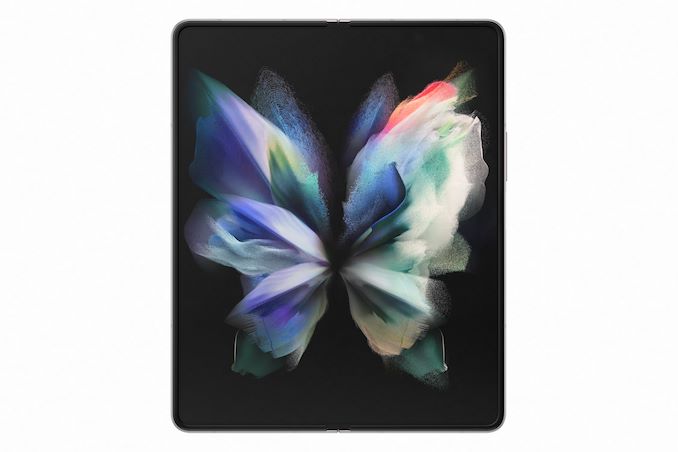

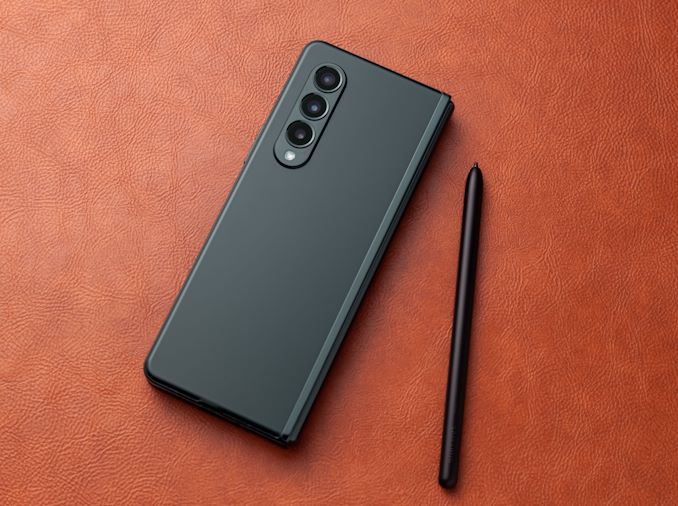
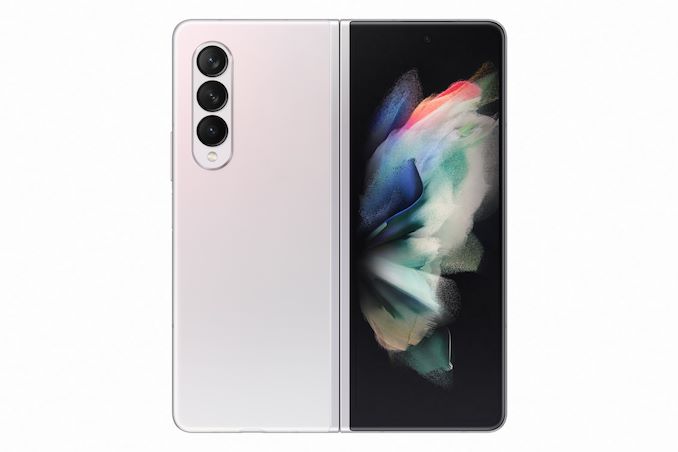
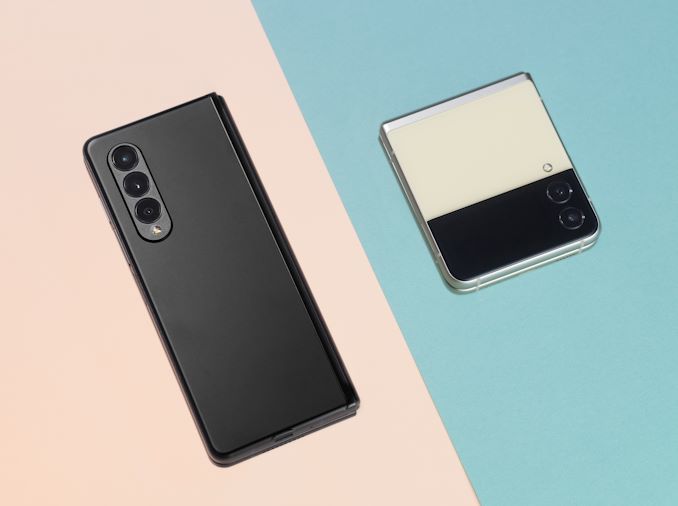
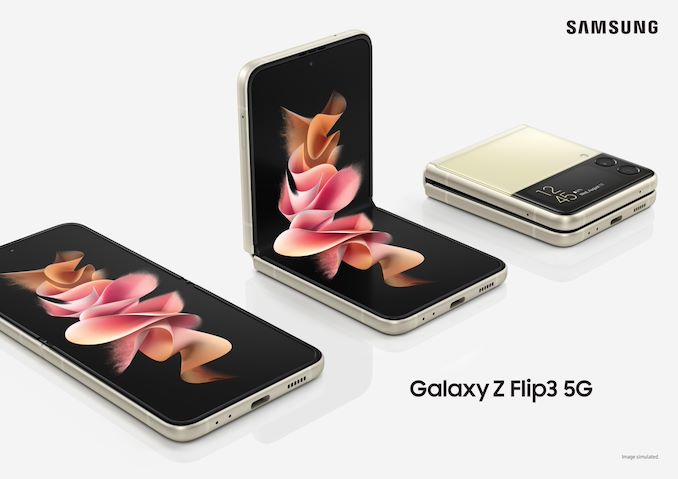
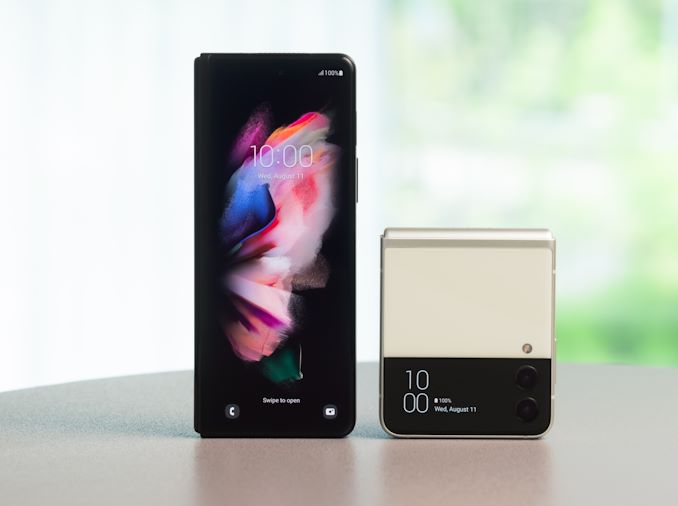
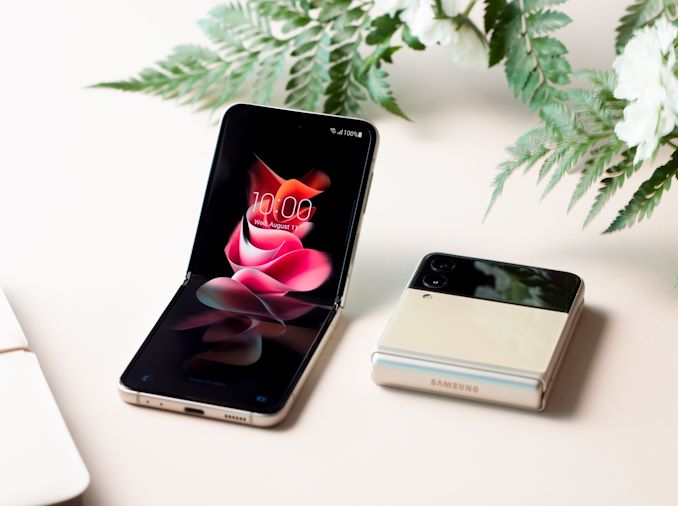
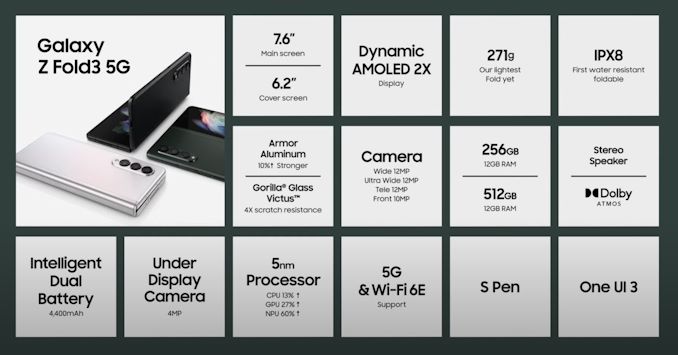
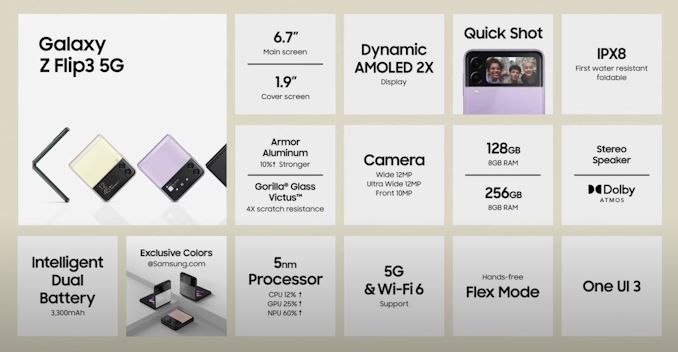








49 Comments
View All Comments
FunBunny2 - Wednesday, August 11, 2021 - link
"what benefit does the Flip have over a normal form factor phone? "same as any flip from 2 decades ago: fits in a pocket and less likely to crack given the reduced lever action on the frame.
Silver5urfer - Wednesday, August 11, 2021 - link
Lol Samsung is now copying how Apple does with those small boxes, these fools miss the pictures in them which Apple does. What's even left to ape at this point.Another use and throw device is all I see in these, Foldable use what's the use of these devices ? The Android 12 itself kills multitasked apps hard. And no Android App is tailored to take real estate and then the weird square aspect ratio which makes any video playback useless to make it worse it's too narrow device to make use of it's screen. Maybe Emulators ? But this is a flexible plastic screen meaning it's delicate no matter what. Exorbitant price to be a guinea pig.
The spec sheet is usual fare of latest 888 disaster chipset. But the biggest thing is Battery design is now 2x, means the battery is split. So bonus pack is $999+ device not only doesn't have an IP68 rating but now a battery design which is irreparable by any chance on top the display is probably a consumable like battery now since it will fail over the time with wear and tear.
No 3.5mm jack, no SD slot are usual features as well.
Anyone who pays for this junk is adding more e-Waste garbage on top of planned obsolescence with limited shelf life devices.
ArcadeEngineer - Wednesday, August 11, 2021 - link
Is there a person behind this account, or is it a bot that assembles random snippets of negative reddit posts and then shoves it under every article.vlad42 - Wednesday, August 11, 2021 - link
I see you went straight to a feeble attempt at character assassination. It is good to know that you are incapable of actually arguing against any of Silver5urfer's points.Spunjji - Friday, August 13, 2021 - link
@vlad42 - I'm really tired of this debate-bro false inference that the absence of a detailed blow-by-blow rebuttal of a garbage post somehow disqualifies any claim that it's garbage. In context, it's clear after reading more than a few of 5ilversurfer's posts why people aren't going to waste time on a detailed counter-argument - especially when you see how they stoically refuse to value any opinion other than their own.Spunjji - Friday, August 13, 2021 - link
I do wonder sometimesFulljack - Wednesday, August 11, 2021 - link
I'm intrigued with what you say regarding Android 12 kills multitasked apps hard—care to elaborate on it?Silver5urfer - Wednesday, August 11, 2021 - link
"Apps targeting Android 12 which plan to run in the background can no longer start foreground services" that is one, the other is Google increased the aggressiveness of the Android background tasks that's what I read on the Android Police and XDA a while back since 11.Fulljack - Thursday, August 12, 2021 - link
what does this mean for layman like me?Duraz0rz - Thursday, August 12, 2021 - link
Better battery life and system responsiveness. iOS does the same thing in that apps in the background can't run tasks in the foreground nor can they run for very long in the background before the OS suspends it.